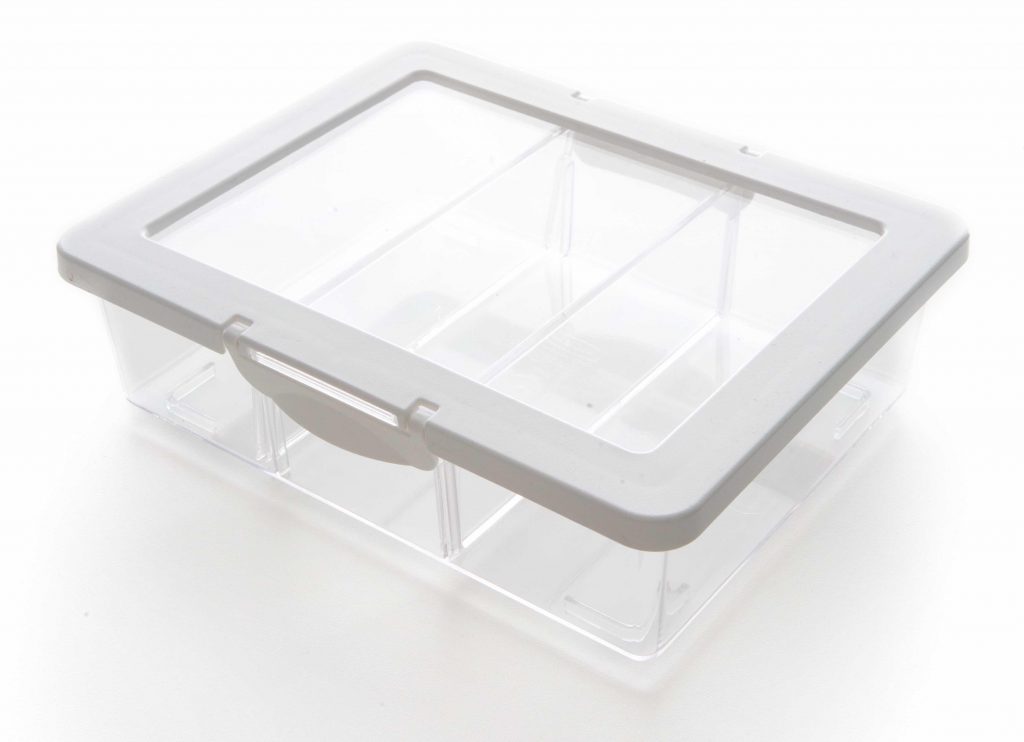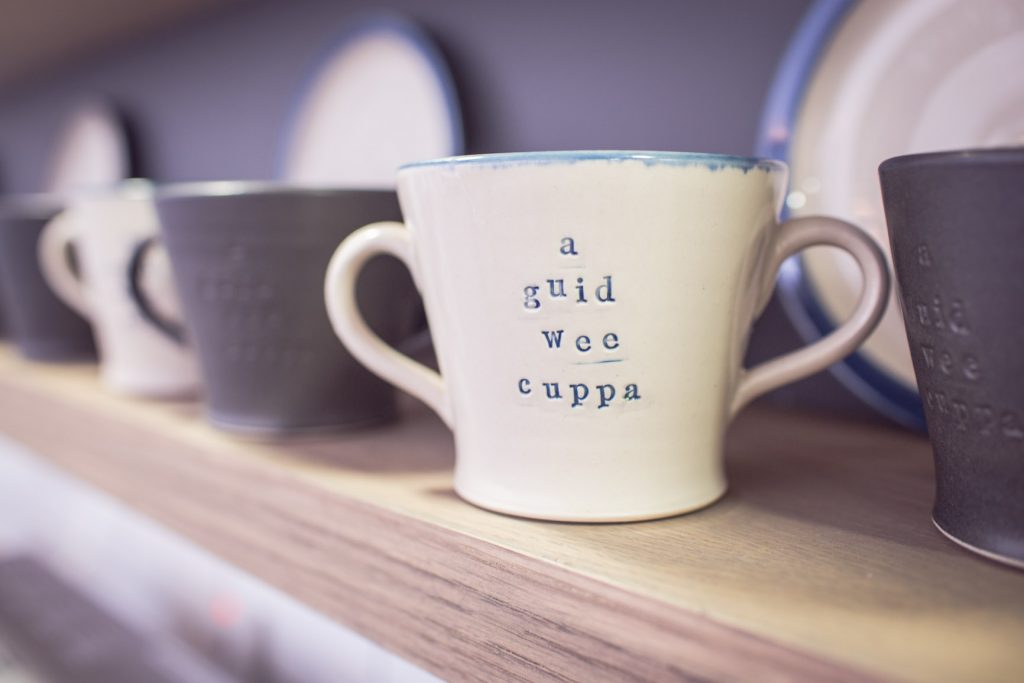When Jeni Lennox’s Grandmother was diagnosed with dementia, she and her family stepped in to care for Granny at home.
Ultimately, this decision would lead Jeni to design a project called ‘Dementia Circle’, a project funded by Alzheimer’s Scotland that seeks to ‘crowdsource’ inclusively designed products for people with dementia and their families.

When Jeni Lennox’s Grandmother was diagnosed with dementia, she and her family stepped in to care for Granny at home.
“There were three families Granny could rely on in the village and she never did go into care, but it took its toll on us all.” Jeni said. “There are few clinical solutions when you’re diagnosed with dementia, but that is our current approach to illness, find the clinical solutions…and when these fail, or have no answers, families can struggle.”
“Granny was well other than her diagnosis, there was no clinical support we could benefit from in the early days, however there was nobody that was sorting out the practical, low level, day to day stuff that Granny was facing, or that we were facing with Granny, so, Dementia Circle was really born out of that frustration.”
Jeni also had a skill set uniquely suited to resolving that frustration and cites her training as a designer as being instrumental in that process: “Being a product designer, I know the potential of good products to help with practical problems and I found it incredibly frustrating that no one was using that approach.” When Jeni speaks of this time, the disillusionment with much of the advice she was getting is apparent in her voice:
“There were challenges with Granny not eating things if she couldn’t see them or if they weren’t out on display on the worktop. She wouldn’t go into cupboards and look for food; eventually she didn’t even recognise the fridge as somewhere food might be.”
“There was really no useful advice we could take beyond removing the doors of the kitchen cupboard. As someone who was tidy all her life this would have caused huge distress – and it’s hard to remove the front of a drawer! “Make sure she can see the toilet from her bed”, was another piece of advice, but she lived in a Victorian quarter villa; there was no way on earth we could move the toilet.”

“I don’t want to dismiss the advice – It’s great if you’re building a care home, or designing an environment from scratch, but from a domestic point of view, for somebody who is coping in their own home (which is something that we want everyone to do), those sorts of pointers are not particularly helpful.”
It turned out that the solutions to the practical problems Granny was facing were to be found in everyday places: “We started the hunt for nice, clear containers, where you could see what’s inside, that had a really easy open top that Granny could get into. She was 94 and didn’t have a lot of strength in her hands, so she couldn’t open Tupperware tubs or anything like that, but we found one in Ikea. That product was the start of Dementia Circle.
Jeni’s premise was:
“If I find something in Ikea that works for Granny, and there are 88,000 other families in Scotland living with dementia, what’s to say that they haven’t found something in Boots, or Tesco, or Lakeland, or wherever, that helps an issue that they’re dealing with and why is that information not shared?”

It’s this kernel of an idea and the support of Joyce Gray at Alzheimer Scotland that finally lead to the development of Dementia Circle. A process that eventually lead Jeni to the realisation that there is wisdom in the crowd. “How can we crowdsource this kind of self-help for people living with dementia and use the knowledge of these families dealing with this day to day to make this big, shared resource that people can come and access. A sort of hive mind, if you like, of potential solutions to the problems people are facing. Once you start talking to families with dementia you find loads of people are having the same problems you are.” With her keen mind for design, Jeni was able to eventually develop design briefs for companies, offering constructive criticism for modifying their products around a new focus for people with dementia, which resulted in a simple realisation:
“Can we not do some of this ourselves? We are designers, Tommy is a designer, I am a designer” Tommy [Petillo, of Included] came in very early doors to help with the product testing and evaluation and setting up Dementia Circle. We are designers, it’s what we are trained to do.”
The sympathetic position Jeni holds with regard to the serious work she does with Dementia Circle is immediately apparent. She speaks with a passion about her work and it would certainly be difficult to miss the impact this experience has had on her life. This is most obvious when she says: “If you realise what’s going on, the thought that you’re going to slowly lose yourself, lose the ability to do the things that make you yourself I mean, it’s a very difficult thing to face.” This huge sense of empathy carries through into her design philosophy and she sees many of the solutions to these issues as being built around the user, rather than asking the user to change their behaviour. “There are lots of things out there and the frustration is that if you start to look at the problem as a designer, you have a slightly different perspective on the world. You’re always scouting for stuff that’s on the shelves, you’re always looking through everything you come across like, “Oh! That’s good! That’s interesting!” And it’s taking that approach to the problem rather than an, “Oh well, you know, maybe you could just change your behaviour a bit here and you’re just going to have to cope with this” I much prefer the designer approach which is,
“No, I’m not going to be able to just cope with this, I’m going to fix this. How can I fix this? How can I put something in place to mitigate the deterioration a bit?”
This is not to say that Jeni is merely focused on finding a purely functional solution to the issue. Far from it, she believes that there’s no need to sacrifice aesthetic for function, and that these products have the capacity to be beautiful too:
“The general wisdom in the UK is to think that you have to sacrifice aesthetic for function, which just doesn’t make any sense. It’s just part of the criteria list for any good product. If the product looks horrible, why would you have it?”

Jeni prefers a more straight forward focus: “In user driven design, which is what we’re all doing now, this is how you start; you find out what the user needs. So, things like good design can help you do jobs and activities more easily and with more pleasure and that incremental increase in wellbeing, I think, helps people live better with conditions that can’t be addressed in a clinical way. If every time you put on a washing, it irritated you, it would be like walking the dog with grit in your shoe, so why would you do that? You would just empty your shoe”
“All design is doing in these situations with dementia is to empty people’s shoes of a little of the grit and they can get on with the difficult journey in slightly more comfort. It doesn’t help their condition, but it makes it easier to cope by removing some of the irritation.”

Jeni Lennox is an Experience and Service Designer delivering design led projects for a range of commercial and third sector organisations.
| Cookie | Duration | Description |
|---|---|---|
| cookielawinfo-checkbox-analytics | 11 months | This cookie is set by GDPR Cookie Consent plugin. The cookie is used to store the user consent for the cookies in the category "Analytics". |
| cookielawinfo-checkbox-functional | 11 months | The cookie is set by GDPR cookie consent to record the user consent for the cookies in the category "Functional". |
| cookielawinfo-checkbox-necessary | 11 months | This cookie is set by GDPR Cookie Consent plugin. The cookies is used to store the user consent for the cookies in the category "Necessary". |
| cookielawinfo-checkbox-others | 11 months | This cookie is set by GDPR Cookie Consent plugin. The cookie is used to store the user consent for the cookies in the category "Other. |
| cookielawinfo-checkbox-performance | 11 months | This cookie is set by GDPR Cookie Consent plugin. The cookie is used to store the user consent for the cookies in the category "Performance". |
| viewed_cookie_policy | 11 months | The cookie is set by the GDPR Cookie Consent plugin and is used to store whether or not user has consented to the use of cookies. It does not store any personal data. |